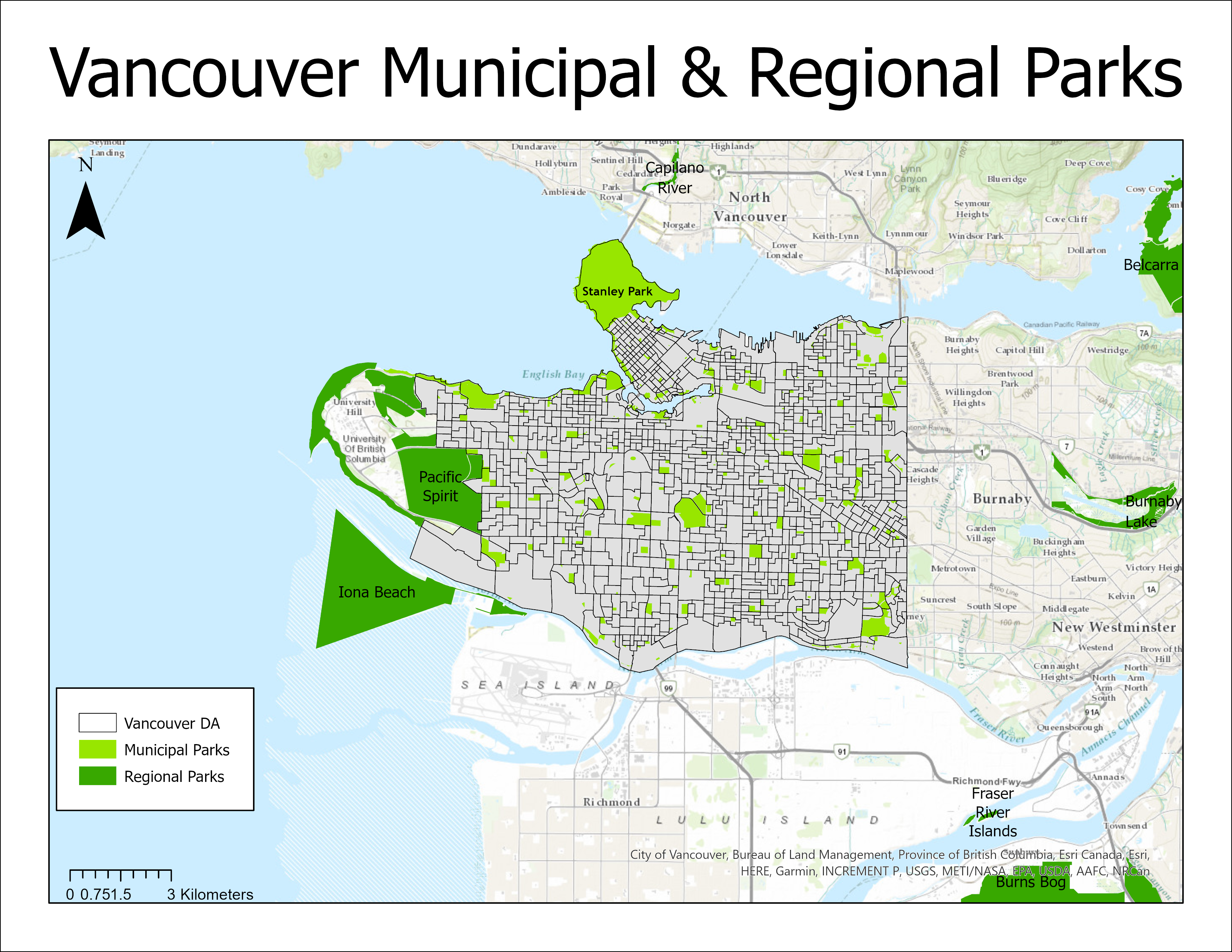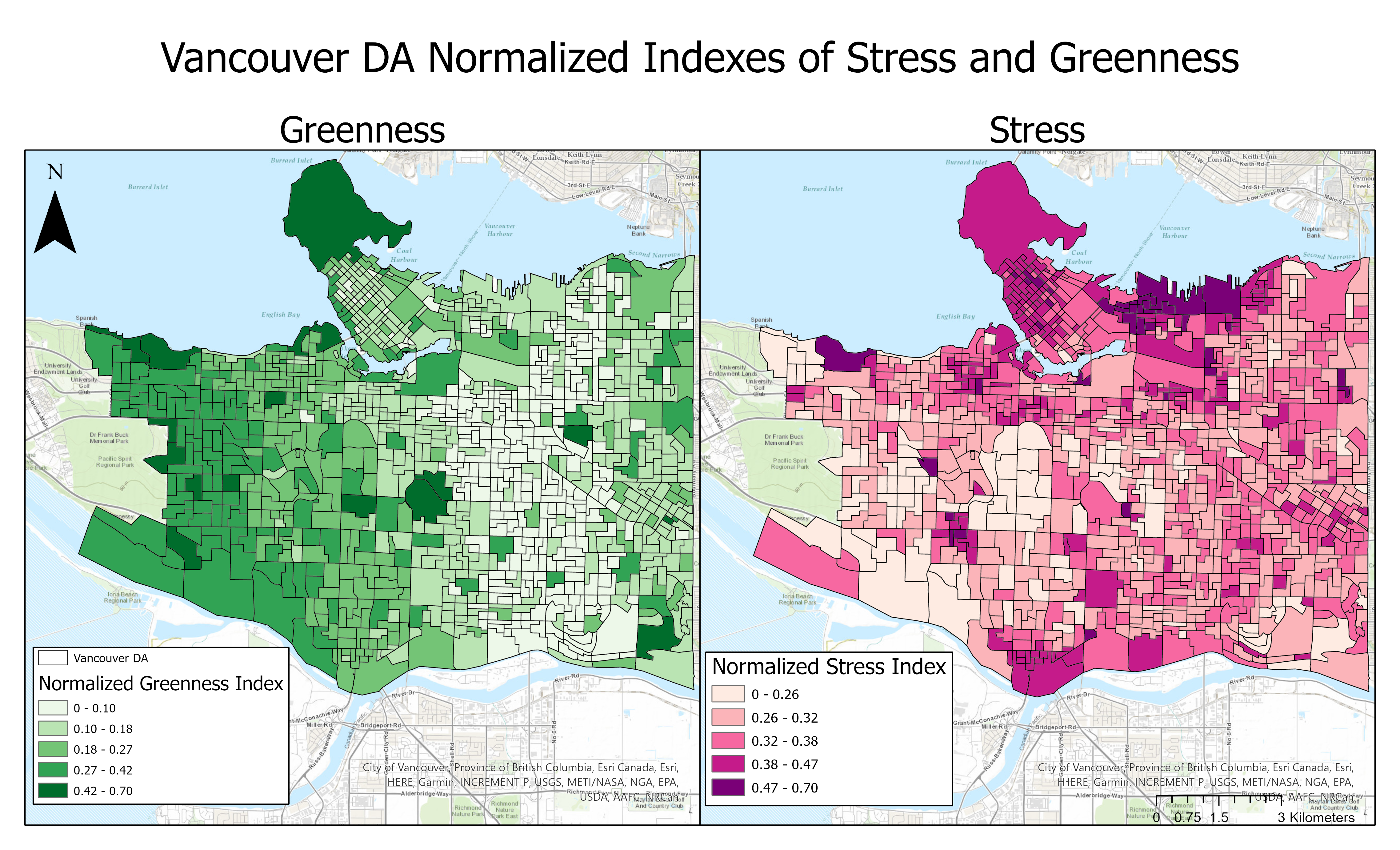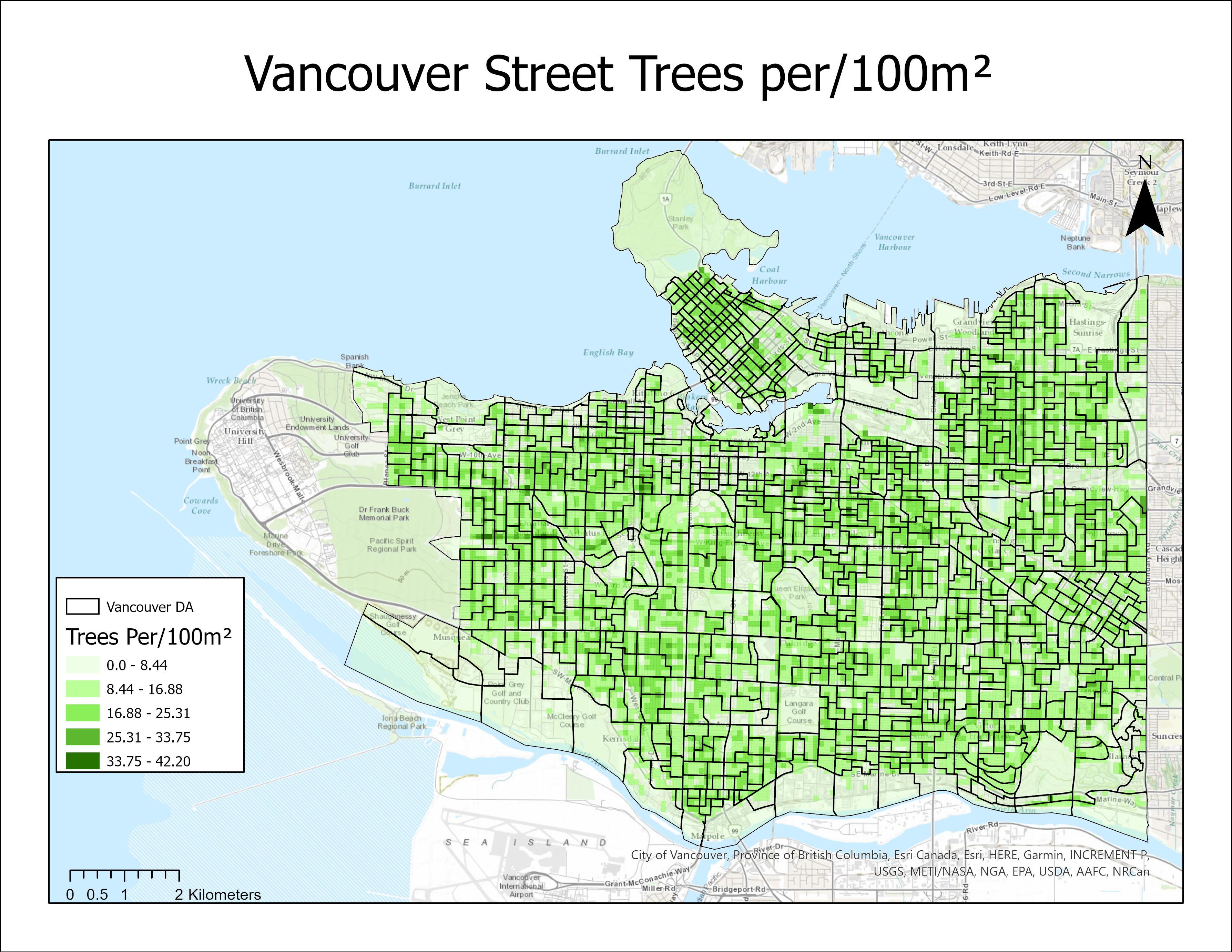Research Question:
Is there a correlation between access to, and presence of urban green spaces and lower stress levels?
Study Area: Figure 1
The city of Vancouver, excluding the University of British Columbia Endowment Lands. However, regional parks outside of the Vancouver municipal boundary were used. Vancouver is especially know for being a “green” city, both policy wise as well as by its plethora of green spaces.
Figure 1:
Weighted Stress Index: Figure 2,
This index was created in the absence of a standardized index provided by Statistics Canada. The variables of the index are: ‘spending more than 30% income on dwelling’, ‘no education’, ‘unemployment rate’, ‘number divorced’, ‘recent immigrants’, and ‘income’. The decision to incorporate these variables within the index is based on the availability of data, but as well the evidence of their contribution to levels of stress shown in, Bently et al. 2011, Cohen & Finzi-Dottan. 2012, D’Arcy & Siddique. 1985, Mills et al. 2016, Molarius et al. 2009, Research and Evaluation. 2012, and Santiago et al. 2011.
Figure 2:
Weighted Greenness Index: Figure 1, Figure 2, Figure 3
In order to determine the affect of the urban green spaces on the weighted stress index, a standardized greenness index was created to test its correlation with the weighted stress index. The three variables included in this metric were: ‘Number of Street Trees’, ‘Distance to Nearest Major Park’, and ‘Area of Minor Park Within DA’. These metrics were decided based upon relevant data available within the Vancouver and Metro Vancouver region.
Figure 3:
The Benefits of Urban Greenspace on Mental Health and Stress:
Urban green space is described as “maintained or unmaintained environmental areas” within or in the proximity of an urban setting (Barton & Rogerson, 2017). The presence of greenspaces within neighborhoods provides the benefits of reduced anxiety and depression, as well as better overall wellbeing (Barton & Rogerson, 2017). Barton & Rogerson outline how and individual’s “desire for contact with nature is not just the result of a romanticized view of nature, but is an important adaptive process, which appears to aid optimum functioning”. Greenspace has proven to prove beneficial across age groups and genders, particularly in women 54-91 years old and in children (De Keijzer, 2020). Additionally, along with the subconscious benefits of being within green spaces to overall stress and mental health, they provide a quite, peaceful place of refuge presented in the form of nature scenes (De Keijzer, 2020).



